Exposed single insulation on meter tails is classified as an EICR failure, typically rated as C2 under the EICR coding system, indicating a potentially dangerous condition that requires urgent attention. Single insulation serves as an essential barrier against electrical shocks and other hazards; its exposure can lead to severe safety risks such as electric shock or fire. Immediate action, including meticulous inspection and repair by qualified electrical professionals, is imperative to guarantee adherence to safety standards set forth in the UK regulations, specifically BS7671. Recognizing the severity of this issue guides necessary preventive measures and reinforces the importance of maintaining electrical system integrity. A detailed understanding of these processes guarantees effective management of associated risks.
Key Takeaways
- Single insulation exposure on meter tails may receive a C2 EICR code, indicating urgent repair needs due to safety risks.
- Exposed single insulation increases the risk of electrical shocks and fires, necessitating prompt corrective actions.
- Regular EICR inspections help identify and mitigate risks associated with single insulation failures on electrical tails.
- Repair of exposed insulation should comply with UK standards using appropriate materials like PVC or EPR to ensure safety.
- Documentation of repairs and EICR findings is crucial for compliance and insurance purposes, reducing potential legal and financial issues.
Table of Contents
Understanding Single Insulation Exposure in Meter Tails
Single insulation in electrical installations refers to the primary layer of non-conductive material that surrounds conductive wires. It is vital for preventing electrical shocks and short circuits.
Exposure of this insulation layer in meter tails can occur due to mechanical damage, ageing, or improper installation, leading to potential safety hazards and compliance issues with electrical standards.
Understanding the causes and implications of such exposure is essential for maintaining the integrity and safety of electrical systems.
What Is Single Insulation in Electrical Installations?
In electrical installations, single insulation refers to a protective layer that surrounds the conductive material within a cable, such as the copper wires used in meter tails. This layer is vital in preventing electrical shocks and guaranteeing the safe operation of electrical systems. The significance of maintaining intact insulation is underscored by various insulation types and their roles in electrical safety and adherence to installation standards.
Here are the key aspects of single insulation:
Material Composition
Single insulation, typically made from PVC or rubber, is designed to withstand environmental factors and electrical
stresses.
Functionality
It acts as a barrier between the electrical conductor and the external environment, preventing direct contact with the conductive parts.
Compliance with Standards
It is essential for safety and effectiveness to verify that each piece of insulation meets specific standards, such as IEC 60227 or BS 6004.
Safety Implications
Any damage to this insulation layer can lead to circuit faults, potential fires, and electric shock, emphasising the need for regular inspection and maintenance.
Understanding these components helps professionals guarantee that electrical installations are both safe and efficient, aligning with high industry standards and practices.
Causes of Exposed Single Insulation on Meter Tails
Understanding the structural integrity of single insulation is foundational to ensuring electrical safety, as previously outlined. The exposure of single insulation on meter tails can be attributed to several factors, each highlighting the critical need for robust maintenance practices and awareness of the types of insulation used in these applications.
| Factor | Description |
| Mechanical Damage | Physical impacts or abrasions that compromise the outer layer of insulation. |
| Chemical Corrosion | Exposure to harmful chemicals that degrade insulation materials over time. |
| Thermal Degradation | Excessive heat exposure causes the insulation to become brittle and crack. |
| Improper Installation | Incorrect installation techniques that stress or stretch insulation. |
Each of these causes contributes to the deterioration of insulation integrity, necessitating periodic reviews and appropriate maintenance strategies. Understanding these factors and their impact on electrical installations empowers professionals to implement preventative measures. This knowledge is essential for maintaining the safety and functionality of electrical systems, adhering to current standards, and extending the lifespan of the installation components.
EICR Coding for Exposed Single Insulation
In the context of Electrical Installation Condition Reports (EICR), the exposure of single insulation on tails is typically classified under specific codes, particularly C2 or C3, depending on the severity and immediate risk posed.
A C2 code indicates a potentially dangerous condition that requires urgent attention. In contrast, the C3 code suggests that the condition, while not ideal, does not pose an immediate danger but should still be rectified to meet standard regulations.
Understanding these classifications helps prioritise corrective actions and ensure compliance with electrical safety standards.
How EICR Classifies Single Insulation Exposure
Exposure to single insulation in electrical installations is considered a significant compliance issue under the Electrical Installation Condition Report (EICR) guidelines. This problem is addressed rigorously due to its potential impact on electrical safety requirement and overall system integrity.
EICR standards provide a structured approach to classify and report such findings to guarantee that corrective actions are prioritised.
The classification process under EICR for exposed single insulation involves several key assessments:
- Identification: The initial step involves a visual and instrumental examination to confirm the presence of single insulation exposure. This is critical in determining the extent and location of the issue.
- Risk Assessment: Once identified, the risk associated with the exposed insulation is evaluated. Factors considered include the likelihood of electrical contact, environmental conditions, and the installation’s vulnerability to physical damage.
- Coding: The issue is coded appropriately based on the risk assessment. Each code reflects the urgency and nature of the risk posed by the exposed single insulation.
- Documentation: Detailed records are maintained, outlining the nature of the exposure, associated risks, and recommended corrective measures. This documentation is essential for guaranteeing compliance and facilitating timely remedial actions.
Implications of C2 and C3 Codes for Insulation Issues
When addressing the implications of C2 and C3 codes assigned during an Electrical Installation Condition Report (EICR) for exposed single insulation, it is essential to understand their distinct impacts on safety and compliance measures.
A C2 code indicates a potentially dangerous condition that requires urgent attention. This code is typically assigned when the integrity of insulation materials compromises electrical safety, posing immediate risks like electric shock or short circuits. Immediate remedial actions are imperative to restore the installation to a safe state and ensure compliance with current electrical standards.
Conversely, a C3 code suggests improvement is recommended but not immediately necessary for safety. In the context of exposed single insulation, this might relate to ageing or slightly deteriorated insulation that still performs its function but could lead to compliance challenges in the future. Addressing these issues proactively can prevent their escalation into more severe problems, maintaining operational reliability and adherence to safety protocols.
Both codes serve as critical indicators in the management of electrical installations. They guide the prioritisation of repairs and upgrades to uphold stringent safety standards and compliance requirements, thereby mitigating risks associated with faulty insulation materials.
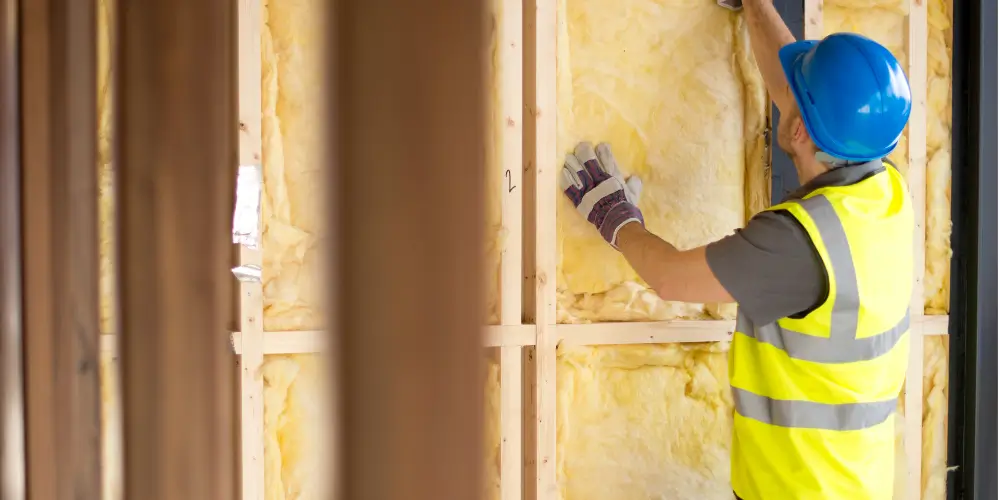
Safety Risks Associated with Exposed Single Insulation
Exposed single insulation on electrical meter tails presents significant safety risks, including the potential for electrical shocks and fires.
Documentation of real-world incidents where such exposure has led to accidents underscores the urgency of addressing this issue.
Mitigating these hazards is essential for ensuring the safety of both property and personnel in environments where electrical systems are in operation.
Potential Hazards of Unprotected Meter Tails
Although often overlooked, the risks associated with unprotected meter tails that feature only a single insulation are significant and multifaceted. This vulnerability can lead to several hazards, critically impacting the safety of electrical systems in residential and commercial buildings. Understanding these risks is essential for implementing effective hazard prevention strategies.
- Electrical Shocks: Exposed or poorly insulated meter tails pose a high risk of electrical shocks. This is particularly concerning in areas accessible to the untrained public or where accidental contact can occur.
- Fire Hazards: Single insulation may not adequately prevent arcing or overheating, which are primary contributors to electrical fires. The quality of insulation material types used in meter tails must meet specific safety standards to reduce this risk.
- System Failures: Inadequate insulation can lead to short circuits and subsequent power outages or system failures. Regular electrical safety training for maintenance personnel can mitigate these issues by ensuring early detection and maintenance of insulation integrity.
- Legal and Compliance Issues: Non-compliance with electrical safety codes can result in legal repercussions, including fines and mandatory system upgrades, which could be costly.
Adherence to updated safety protocols and continuous education on the latest insulation practices are essential for maintaining system integrity and safety.
Real-World Incidents Highlighting the Dangers
Several incidents worldwide underscore the perilous consequences of using only single-insulated meter tails in electrical systems. Real-life case studies document numerous instances where inadequate insulation led to short circuits, fires, and significant property damage.
For instance, a notable event in a commercial complex involved a fire that originated from an overloaded electrical panel with single-insulated tails exposed to conductive surfaces. This incident not only disrupted business operations but also highlighted critical lapses in safety compliance and installation standards.
Emergency response protocols were immediately revised post-incident to include regular inspections and immediate replacement of single-insulated wiring in similar setups. Industry best practices now strongly recommend double insulation on meter tails and rigorous adherence to installation guidelines outlined in the National Electrical Code (NEC).
These practices are designed to mitigate risk and enhance safety by preventing direct contact with live electrical components, which can lead to catastrophic outcomes.
The adoption of these enhanced safety measures and protocols reflects a commitment to upholding standards and protecting assets against electrical hazards. Industry professionals must implement these guidelines to prevent similar incidents and guarantee operational and public safety.
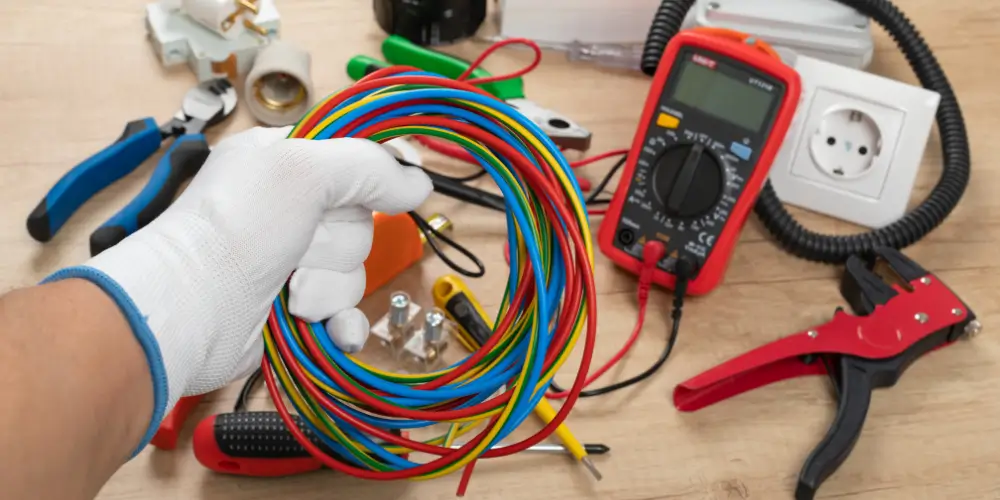
Legal Requirements for Insulation in Electrical Installations
In the UK, electrical installations must adhere strictly to defined insulation standards as mandated by the Wiring Regulations, which are integral to ensuring electrical safety and system integrity.
Property owners in London, along with those in the rest of the UK, are required to comply with these regulations. They face stringent inspections and potential penalties for non-compliance.
This regulatory framework is designed to mitigate risks associated with inadequate insulation, such as electrical fires or system failures.
UK Regulations on Insulation Standards
Understanding the UK regulations on insulation standards is vital for guaranteeing compliance in electrical installations. These standards are designed to safeguard both property and life by specifying minimum requirements for insulation material types, insulation installation techniques, and insulation performance standards. Mastery of these regulations is fundamental for professionals in the field.
Insulation Material Types
The UK regulations stipulate the use of specific types of insulation materials that meet fire safety and thermal resistance criteria. Materials such as PVC, XLPE, and EPR are commonly prescribed due to their high resistance to heat and electrical
conductivity.
Installation Techniques
Proper installation techniques are essential in meeting UK standards. This includes guaranteeing that the insulation covers all live parts adequately to prevent any direct contact or arcing and that it is secured against displacement or damage under normal operating conditions.
Performance Standards
Insulation must comply with BS7671 requirements, which detail the performance characteristics needed to withstand environmental and operational stresses. This includes resistance to moisture, chemicals, and temperature variations.
Routine Testing and Verification
Regular testing and verification guarantee that insulation integrity is maintained over time. This involves both visual inspections and more thorough testing using specialised equipment to detect degradation or failure in insulation.
Adherence to these detailed standards is about more than legal compliance; it is also about guaranteeing the reliability and safety of electrical installations.
Compliance Obligations for London Property Owners
Building on the importance of meeting UK insulation standards, property owners in London face specific legal requirements that guarantee their electrical installations comply with both local and national regulations. Under the UK Wiring Regulations, often referred to as the BS 7671, London landlords must ascertain that all electrical systems are properly insulated to prevent hazards such as electric shocks or fires.
This involves not only the initial installation but also regular inspections and maintenance, which are meticulously documented in an Electrical Installation Condition Report (EICR).
For effective property management, these obligations necessitate a proactive approach to electrical education, guaranteeing that both property owners and tenants are aware of their roles and responsibilities. This could include routine tenant awareness programs that educate residents on the importance of reporting any signs of electrical deterioration or failure immediately.
Moreover, compliance isn’t merely a bureaucratic checkbox but a critical component of property safety and tenant protection. Non-compliance can lead to severe legal repercussions, including fines or more stringent penalties.
Therefore, staying informed about the latest regulations and adopting a rigorous maintenance schedule is indispensable for London property owners aiming to uphold safety standards and mitigate potential liabilities.
How to Address Exposed Single Insulation in Meter Tails Effectively, a structured series of corrective steps must be followed to address exposed single insulation in meter tails.
Initially, a thorough inspection should be conducted to assess the extent of the insulation deficiencies, ensuring that all non-compliant aspects are identified.
Subsequently, it is essential to engage a qualified electrician who is certified to undertake the necessary remedial work and adhere strictly to the latest industry standards and safety regulations.
Steps to Correct Insulation Deficiencies
Addressing exposed single insulation in meter tails is an essential step in guaranteeing electrical safety and compliance with regulations. This process requires employing advanced insulation repair techniques, ongoing electrical safety education, and robust preventive maintenance strategies.
Here are detailed steps to correct these deficiencies:
Assess the Damage
Begin by thoroughly examining the extent of insulation damage. Use precise measurement tools to determine the degree of exposure and degradation. This assessment will guide the selection of appropriate repair materials and techniques.
Select Suitable Materials
Depending on the assessment, choose high-quality insulation materials that meet regulatory standards for thermal resistance and durability. Options may include heat-shrink tubing, electrical tape, or silicone wrap, each offering specific benefits.
Apply Repair Techniques
Implement the chosen repair solution by carefully following manufacturer instructions to guarantee a secure and compliant application. Techniques may involve cleaning the conductor surface.
Test and Document
After repairs, conduct electrical tests to confirm the integrity and safety of the meter tails. Document all procedures and results in a maintenance log to support future inspections and warranty claims.
Each step is essential for restoring safety and functionality to electrical systems, greatly reducing the risk of failures and compliance issues.
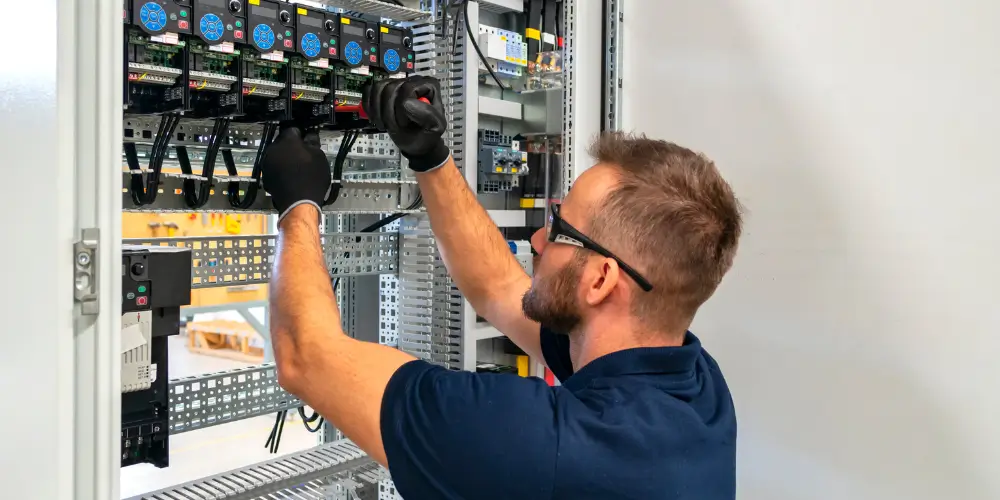
Hiring Qualified Electricians for Remedial Work
While addressing the issue of exposed single insulation on meter tails, it is crucial to engage qualified electricians who possess the necessary certifications and experience in electrical repair and compliance with safety standards. Selecting the right professional is central to guaranteeing that the remediation project is carried out effectively and safely.
The chosen electricians must have a robust understanding of the complexities involved in such repairs, including knowledge of the latest regulations and techniques. Their qualifications should include, but not be limited to, certifications from recognised electrical safety training programs. Moreover, a structured approach to remediation project management is essential to address any potential risks associated with the exposure of single insulation.
To assist in selecting the appropriate electrician, consider the following table, which outlines key criteria:
| Criteria | Details | Importance |
| Qualifications | Must possess accredited electrical safety and repair certifications. | Critical |
| Experience | Extensive experience in handling similar electrical remediation projects. | High |
| Project Management | Demonstrable skills in managing complex electrical projects efficiently. | Essential |
This structured approach guarantees that the remediation is not only compliant with safety standards but is also executed with precision and expertise.
Preventing Insulation Issues in Future Installations
To mitigate the risk of insulation failures in future electrical installations, adherence to established best practices is essential.
This includes selecting high-quality materials, ensuring proper installation techniques, and conducting thorough inspections post-installation.
Additionally, implementing a regimen of regular maintenance checks can help identify and rectify potential compliance issues before they escalate into significant safety hazards.
Best Practices for Electrical Installations
Maintaining the integrity of insulation in electrical installations is vital for safety and compliance with industry standards. To effectively prevent insulation issues, it is important to adopt a systematic approach to the selection and implementation of materials and practices.
Here are four best practices to enhance the longevity and reliability of electrical insulation:
- Select Ideal Insulation Material Options: Choose high-quality insulation materials that are suited to the specific environmental conditions and electrical load requirements. Materials should comply with the latest standards and innovations in electrical safety.
- plement Robust Meter Tail Configurations: Verify that meter tails are configured correctly to minimise stress and exposure to environmental factors that could degrade insulation. Use flexible conduits where necessary to protect wires from mechanical damage.
- Incorporate Electrical Safety Innovations: Utilise the latest technological advancements, such as insulation resistance testers and thermal imaging cameras, to monitor and diagnose potential insulation failures before they become significant issues.
- Adhere to Installation Standards: Follow strict installation guidelines and standards to guarantee that all components are fitted and insulated correctly, reducing the risk of damage or exposure that could lead to insulation breakdown.
Regular Maintenance Tips to Ensure Compliance
Building on the foundation of best practices for electrical installations, regular maintenance is the next logical step to preserve the integrity of insulation and guarantee ongoing compliance with safety standards.
To prevent insulation failures, robust preventive measures must be integrated into maintenance schedules. These measures should include periodic inspections, focusing on the condition of insulation materials and ensuring they meet the required specifications.
Technicians should be trained to identify early signs of degradation in insulation materials, such as cracking, hardening, or discolouration, which could compromise safety and system efficiency. Implementing a detailed checklist that includes inspecting insulation resistance values and the tightness of electrical connections can help maintain electrical systems’ efficacy.
Additionally, the choice of high-quality insulation materials during the initial installation plays an essential role. Opt for materials that conform to industry standards and are highly resistant to environmental factors like temperature fluctuations and chemical exposures.
Establishing a routine where these checks are systematically recorded and analysed will aid in predicting potential failures and scheduling preemptive repairs. This will thereby extend the lifespan of the electrical installations and ensure compliance with the latest safety norms.

Impact of Insulation Failures on Property Insurance
Insulation defects in electrical installations, such as exposed or deteriorating insulation on tails, can greatly impact the processing of insurance claims. This could lead to disputes or denials due to perceived increased risks.
Property owners must prioritise regular maintenance and compliance with electrical standards to guarantee that their insurance coverage remains in force and is not jeopardised by such failures.
Accurate documentation and adherence to Electrical Installation Condition Reports (EICRs) are essential in demonstrating due diligence and mitigating the risks associated with insulation failures to insurers.
How Insulation Defects Affect Insurance Claims
When insulation defects are present in a property, the repercussions on insurance claims can be significant and multifaceted. These defects not only pose risks to the structural integrity and safety of the property but also lead to complex interactions with insurance policies and claims processing. Understanding the consequences requires a detailed look at the practical repercussions and the administrative processes involved.
- Increased Scrutiny of Claims: Insulation defects may trigger a more rigorous examination by insurers. Claims associated with such defects often require detailed documentation and proof of causality, affecting the policy claim processes.
- Potential for Coverage Denials: Insulation-related issues, especially if pre-existing or due to negligence, can lead to denials under many policies. Insurance coverage implications hinge greatly on the exclusions and conditions listed within the policy.
- Rise in Premium Costs: Policyholders might face increased premiums following claims related to insulation defects. Insurers often recalibrate risk profiles based on recent claims history.
- Escalated Repair Costs: Insulation repair costs can be substantial, depending on the extent of damage. Insurance may not fully cover these costs, particularly if the damage is categorised under ‘wear and tear’ or excluded by the policy.
These factors collectively influence the financial and procedural aspects of managing insulation defect-related insurance claims.
Ensuring Coverage by Maintaining Electrical Safety
Maintaining electrical safety through vigilant inspection and repair of insulation failures is a key strategy in securing thorough property insurance coverage. When insulation materials degrade, they expose electrical systems to risks such as short circuits and overheating, which can lead to catastrophic failures. Insurance providers assess these risks meticulously; the presence of intact and reliable insulation is often a vital factor in determining the eligibility and cost of coverage.
To fortify a property’s eligibility for extensive insurance, it is necessary to adhere to stringent standards for electrical safety. This includes the regular evaluation and replacement of insulation materials to guarantee they comply with current safety codes and possess adequate resistance against environmental stressors. Additionally, integrating robust circuit protection devices enhances system reliability and safety, thereby further reassuring insurance entities of lowered risk profiles.
Property owners must document all maintenance and upgrades to their electrical systems, as this documentation is significant in the event of an insurance claim. Failure to maintain updated and safe electrical installations not only jeopardises coverage but also exposes the property to severe safety risks.
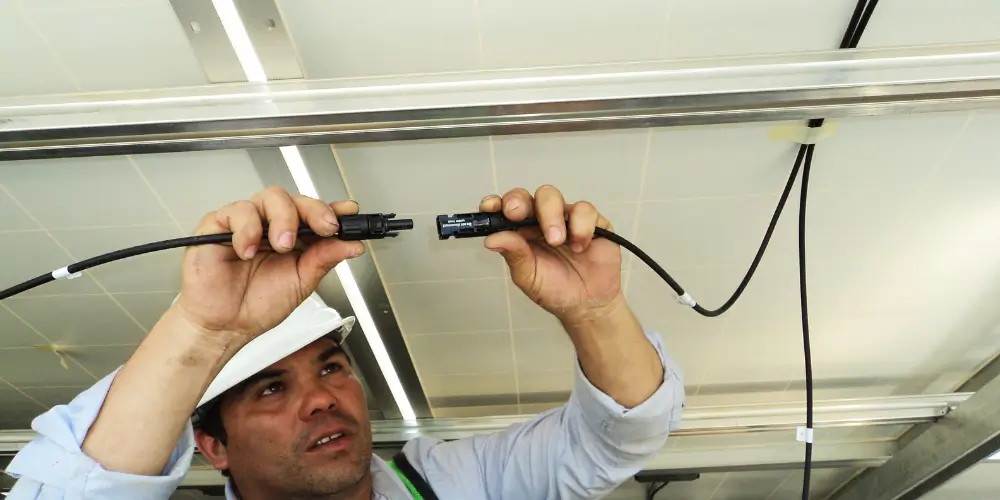
The Role of EICR in Identifying Insulation Issues
The Electrical Installation Condition Report (EICR) is pivotal in detecting insulation defects that could compromise electrical safety.
Regular inspections conducted through EICR guarantee adherence to the current safety standards by identifying deteriorating insulation before it leads to failures.
This proactive approach enhances safety and helps maintain the integrity of the electrical system over time.
Importance of Regular Electrical Inspections
Regular electrical inspections play an essential role in ensuring the safety and efficiency of a building’s electrical system.
These assessments, particularly the Electrical Installation Condition Report (EICR), are critical in maintaining adherence to compliance standards and identifying potential hazards before they become notable issues.
Regular inspections can considerably impact electrical safety and system longevity by adhering to prescribed inspection frequencies and compliance standards.
Key benefits of consistent electrical inspections include:
- Prevention of Electrical Hazards: Regular inspections help in the early detection of faulty wiring and compromised insulation, which can prevent electrical fires and other safety hazards.
- Compliance with Safety Standards: Ensuring that all installations and modifications meet the current regulatory requirements helps avoid legal penalties and enhances safety.
- Optimisation of System Performance: Inspections can identify areas where efficiency can be improved, thereby reducing energy consumption and operational costs.
- Long-term Cost Savings: Proactively identifying and correcting electrical issues can prevent costly repairs and replacements in the future.
How EICR Helps Maintain Safety Standards
How does the Electrical Installation Condition Report (EICR) contribute to maintaining safety standards within electrical systems? The EICR is a pivotal tool in the arsenal of electrical safety protocols, systematically evaluating the safety of existing electrical installations.
This rigorous assessment identifies any compliance issues with current safety standards, pinpointing defects, deterioration, and potential hazards such as inadequate insulation, which could lead to failures or risks.
The benefits of EICR are manifold, primarily revolving around the prevention of electrical accidents through early fault detection. For instance, issues like single insulation showing on tails, as highlighted in electrical inspections, are critical findings that EICR helps uncover.
These issues, if unaddressed, can escalate into severe safety threats, including electrical fires or electrocution.
Executing EICR involves a detailed inspection of all accessible parts of the electrical system, followed by testing to verify the integrity and functionality of cables, insulation, and associated electrical components.
This thorough examination guarantees that all system aspects conform to the latest safety standards, thereby enhancing the electrical installation’s overall safety and reliability.
Single Insulation Failures in Rental Properties
In rental properties, landlords are legally obligated to guarantee that electrical installations, including tail insulation, are safe and compliant with current standards to prevent potential hazards.
Failure to address defects identified in Electrical Installation Condition Reports (EICRs), such as single insulation failures, can lead to substantial fines and penalties.
Property owners must rectify these issues promptly and maintain regular electrical safety checks to uphold safety and compliance.
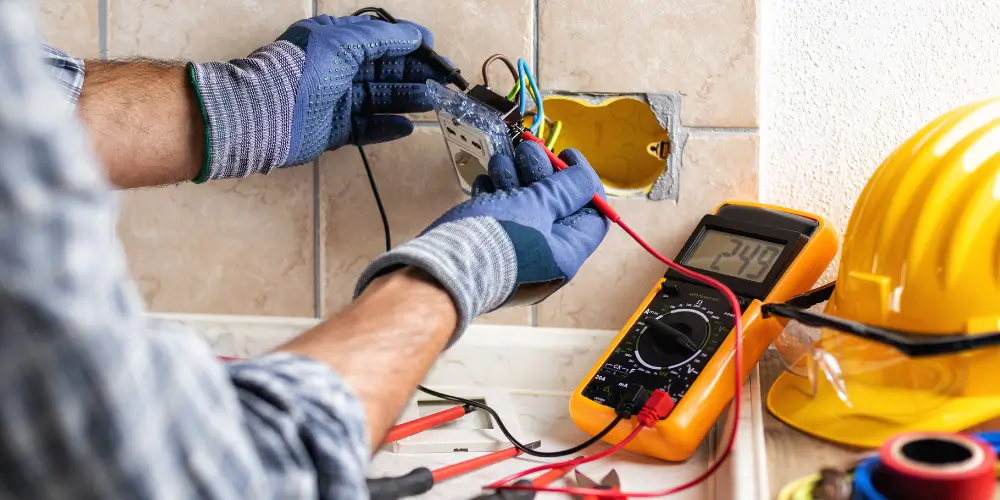
Landlord Responsibilities for Electrical Safety
Landlords are legally required to guarantee that the electrical systems in their rental properties, including the insulation on electrical tails, are safe and meet regulated standards. This responsibility is essential not only for compliance with regulations but also for securing tenant safety.
The integrity of electrical systems, particularly insulation, is fundamental to prevent hazards such as electrical shocks or fires.
To fulfil these obligations, landlords should adhere to the following steps:
- Regular Electrical Inspections: Engage a qualified electrician to perform periodic inspections and obtain an Electrical Installation Condition Report (EICR). These inspections should focus on identifying any deterioration, including single insulation failures on tails, which can pose significant risks.
- Immediate Repairs: Upon detection of any faults, immediate action is required. The use of certified electricians to rectify issues guarantees that repairs meet the latest safety standards.
- Compliance with Standards: Confirm that all electrical installations comply with national standards, such as the UK’s Wiring Regulations, which detail specific requirements for electrical installations.
- Documentation and Records: Maintain thorough records of all inspections, repairs, and replacements. This documentation is essential for demonstrating compliance and can be critical in legal or insurance matters.
Avoiding Fines and Penalties for Non-Compliance
Avoiding fines and penalties for electrical non-compliance, particularly for single insulation failures on tails, requires meticulous attention to regulatory adherence.
Landlords and property managers must stay informed about the latest regulatory updates to guarantee that their electrical installations comply with evolving standards. Implementing robust compliance strategies can mitigate the risk of financial penalties.
Effective compliance strategies encompass routine inspections and maintenance conducted by certified electricians who specialise in Electrical Installation Condition Reports (EICR). These experts assess the integrity of electrical systems, focusing on potential hazards like single insulation failures on tails, which can lead to serious safety risks if unaddressed.
Landlords should establish a schedule for periodic reviews and updates of their electrical systems, aligned with the latest safety regulations. This proactive approach not only secures compliance but also enhances tenant safety.
Documenting all maintenance and repair activities is imperative, as these records can help demonstrate compliance during regulatory authority inspections.
Failure to adhere to these standards can result in substantial financial penalties, which greatly outweigh the costs of maintaining electrical systems in compliance with regulatory requirements.
Consequently, investing in continuous improvement and regular updates to electrical safety practices is essential for avoiding legal repercussions and safeguarding the well-being of all occupants.
Can Insulation Issues Be Temporarily Fixed?
Addressing insulation issues temporarily, particularly in electrical systems, can be a viable solution under certain circumstances. This approach mainly serves as a stopgap to mitigate immediate hazards or operational disruptions until permanent repairs can be executed.
However, it is essential to understand that temporary solutions should never substitute for thorough, compliant remediation, especially in environments governed by stringent safety standards.
Temporary fixes must be executed with precision and knowledge of electrical systems. Here are some steps to take into account:
- Assessment of Damage: Thoroughly evaluate the extent of insulation damage. This assessment helps determine the type and scope of the temporary repair needed. It guarantees that the underlying issue is not exacerbated.
- Selection of Suitable Materials: Use high-quality, appropriate insulation materials that can withstand operational conditions until a permanent fix is applied. Materials such as self-amalgamating tape or heat-shrink tubing are commonly used for their durability and ease of application.
- Application: Apply the temporary insulation material meticulously, ensuring that it completely covers the exposed areas without leaving gaps. Overlapping the material can temporarily enhance the integrity of the insulation.
- Testing and Monitoring: After applying a temporary fix, it’s imperative to test the system for stability and monitor the repair regularly. This step is vital to prevent any electrical faults or further degradation of the insulation.
Temporary fixes like these are not long-term solutions but can effectively prevent immediate dangers and system failures.
Always prioritise safety and compliance, and plan for a permanent repair by a qualified professional as soon as feasible.
Frequently Asked Questions
What Are Common Causes of Single Insulation Damage in Meter Tails?
Mechanical stress, ageing, environmental exposure, and improper installation are common causes of insulation degradation in meter tails. Regular meter tail maintenance is essential for ensuring electrical safety and preventing damage to insulation.
How Quickly Should Exposed Single Insulation Be Repaired?
Exposed single insulation should be repaired immediately to comply with insulation standards and guarantee electrical safety. Prompt repair urgency minimises risk and aligns with best practices in maintaining robust and secure electrical systems.
Who Is Qualified to Fix Single Insulation Issues?
Qualified electricians, well-versed in insulation standards and electrical safety protocols, are authorised to address single insulation issues. These professionals guarantee compliance with rigorous safety norms and uphold the integrity of electrical systems through expert repairs.
Are There DIY Solutions for Exposed Single Insulation?
DIY insulation tips often include temporary fixes, yet 75% of electrical accidents occur from improper handling. Implementing safety precautions is essential; professional intervention is recommended for permanent solutions to exposed single insulation issues.
What Are the Signs That Single Insulation Is Failing?
Signs of single insulation failure include visible cracks, discolouration, and brittleness. Regular safety inspections are essential for early detection, enhancing electrical hazard awareness and preventing potential risks associated with compromised insulation integrity.

